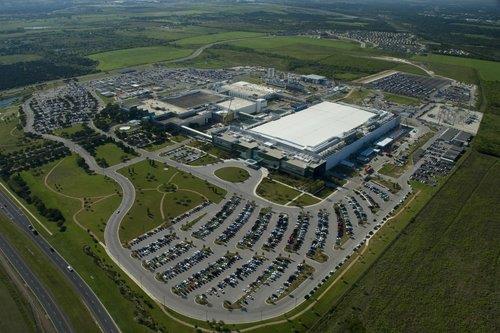After the US, China also demands cooperation… ‘Sandwich’ growing concern for domestic companies
Samsung White House’Invitation’ Response Card Concerns… Burden on the global’semiconductor money game’
(Seoul = Yonhap News) Reporter Mi-sook Seo = As the competition for supremacy between the US and China to change the world’s semiconductor supply chain centered on their own, it is expected to have a considerable impact on the domestic semiconductor industry.
Samsung Electronics, which had to participate in anti-forced efforts to sanction Huawei in the U.S. due to a trade conflict between the United States and China[005930]And SK Hynix[000660] This is because the embarrassing situation in which domestic companies are forced to choose one side amid the struggle for supremacy of the two major powers can be reproduced.
In particular, Samsung Electronics, which occupies a high position in the global market, is facing growing concerns as it stands at the center of the battle for supremacy in semiconductors in both countries amid intensifying competition with global semiconductor companies.
Both the US and China are important production bases and distributors, but they are concerned about the worst case for the two countries to take sides.
Samsung Electronics is currently operating a foundry plant in Austin, USA, and a semiconductor production plant and post-processing (packaging) plant in Xi’an and Suzhou, China, respectively.
![Samsung Electronics Austin Plant, USA[삼성전자 제공. 재판매 및 DB 금지]](https://i0.wp.com/img9.yna.co.kr/etc/inner/KR/2021/04/05/AKR20210405108100003_01_i_P4.jpg?w=560&ssl=1)
Samsung Electronics Austin Plant, USA[삼성전자 제공. 재판매 및 DB 금지]
Samsung Electronics is in an emergency on the 12th of this month as the U.S. White House is invited to a meeting with major semiconductor and finished car companies to prepare an emergency response plan for the recent semiconductor shortage.
It is because the US government, which is pursuing a restructuring of the semiconductor supply chain, cannot know what kind of tasks it will pose to Samsung Electronics.
There are many observations in the industry that the US government, which is pushing for a domestic-centered supply chain restructuring, will require Samsung Electronics to make new investments in the US.
Samsung Electronics is currently planning to build an additional semiconductor plant worth 17 billion dollars in the US and is considering candidate locations in Texas (Austin), New York, and Arizona.
Among them, the current plan to expand the Austin plant, which has secured a new site, is a promising situation.
Samsung Electronics is in a tug-of-war with Texas over the scale of new incentives, which could put a burden on Samsung if the US government puts pressure on it.
It is reported that Samsung is currently struggling over who will attend the invitation to the White House scheduled for the 12th.
On behalf of Vice Chairman Lee Jae-yong, who is under arrest, Kim Ki-nam, CEO of the DS (semiconductor and parts) division, Choi Si-young, foundry business manager (president), and Jung Jae-hun, vice president of the DS division, are expected to attend, but have not been decided yet.
Meanwhile, if investment pressure from the Chinese government, which has dreamed of becoming a semiconductor, is added in the future, the burden on Samsung is expected to increase.
Earlier on the 3rd, at the meeting of the foreign ministers of Korea and China held in Xiamen, Fujian Province, China, China demanded the South Korean government for cooperation in semiconductors and 5G mobile communications.
China is Korea’s largest semiconductor exporter and is a market that cannot be ignored.

[연합뉴스TV 제공]
Experts are concerned that the emphasis on’semiconductor independence’ in countries around the world such as Europe due to the recent semiconductor supply shortage could also be a burden on domestic semiconductor companies.
The European Union recently announced that it is ready to invest 1 billion euros in semiconductor manufacturing technology development projects, and the US also announced on the 1st that it will invest 50 billion dollars (about 56 trillion won) in its own semiconductor business.
Earlier, a’money game’ has begun in the global semiconductor market while the Chinese government has fully supported its own semiconductor industry.
Individual competitors of Samsung Electronics are also beating horribly.
On the 1st, Samsung’s foundry rival TSMC announced that it plans to invest $100 billion over the next three years, including the United States. ) To enter the foundry market.
Although Samsung Electronics announced that it will achieve the global No. 1 in system semiconductors, including foundries, by 2030, an environment that is difficult to achieve is being drawn.
Samsung Electronics is showing the’super gap’ in the technology competition in the memory semiconductor sector, such as DRAM and NAND flash, which have been firmly positioned at the top of the list recently.
An official in the industry said, “Samsung Electronics has a business risk arising from diplomatic issues as well as the absence of a total number at a critical time when it is time to decide on a large-scale investment and business strategy.” .
Unauthorized reproduction-redistribution prohibited>
2021/04/05 15:39 sent
